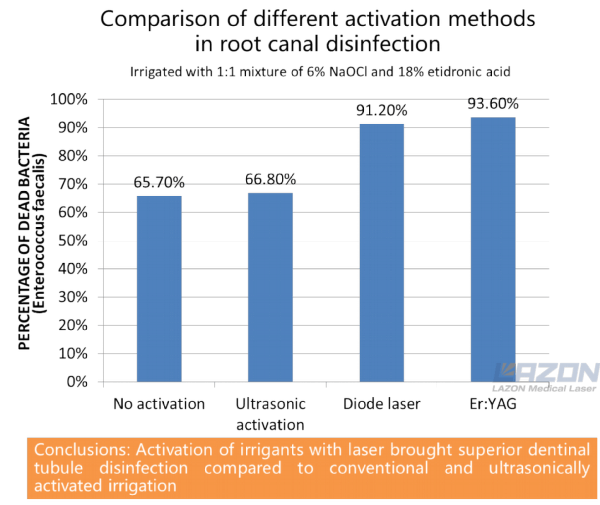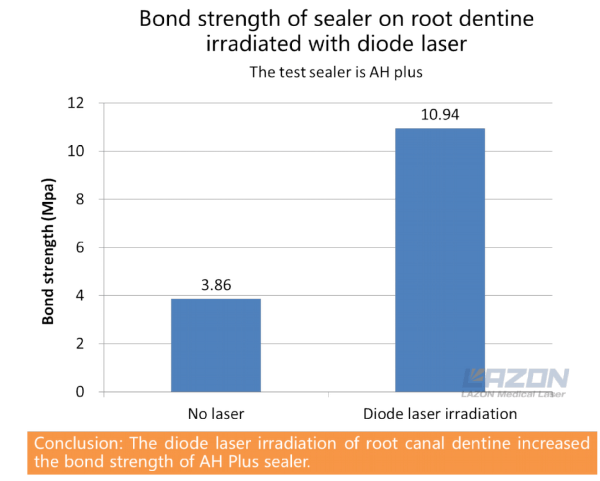Removal of smear layer and disinfection of canals are important objectives of teeth root canal cleaning. In order to achieve this purpose, rinsing substances, intra canal drugs as well as ultrasound are used. But the treatment effect sometime is still not good enough because there is always incomplete disinfection, leading to the re-infection. There are three main reasons. Firstly, some area in canals is difficult to access by instruments and irrigant solutions; Secondly, Bacteria in biofilms are resistant to many of the antimicrobial agents used in endodontics; Thirdly, the chemical substances used in intracanal irrigation and medication are able to penetrate only up to 0.1mm of the dentinal canaliculi, but the bacteria can colonize the canaliculi to a depth of up to 1.1mm.
Today, use of dental laser to remove smear layer and to disinfect root canals has increasingly attracted the attentions. Different laser wavelengths have been used directly or as an adjunctive to disinfect canals. Laser light can penetrate areas of canals where irrigating and disinfecting solutions cannot reach, like secondary canals and deep dentinal tubules and also can eliminate microorganisms. Studies performed in relation with anti-microbial effects of diode laser with various parameters show that this laser can be effective in reducing intra canal bacterial count and penetration in the depth of 500 microns in dentin. In studies performed on Diode laser in combination with canal irrigating solutions such as sodium hypochlorite and oxygenated water better results were obtained. Therefore, use of laser energy can improve success rate of root canal treatments.

At the same time, diode laser irradiation of root canal dentine is helpful to increase the bond strength of sealer.
